You crave a walk on the cobblestone streets of Europe but can’t hop on a plane? Go to Québec City and you’ll feel you’ve crossed the pond, minus the jet lag.
And if you live on the other side of the pond, you’ll feel that you never left.
The capital of Québec (known as La Nouvelle France in the 16th century) whisks you to the Old Continent with its architecture, fortress, churches, and the sultry sound of French words. Scenic river views frame stone buildings, murals, and sculptures as you climb up and down the many stairs of this enchanted city.
Once you’re here, explore a little bit further and you’ll find waterfalls, forests, and more architectural wonders that will make this historic city an unforgettable destination.
I put together a walking itinerary including the best viewpoints and not-to-miss landmarks of Old Québec (Vieux-Québec), and some nearby attractions that will make you say Oh-la-la!. Read below and enjoy.
Disclosure: This post contains some affiliate links. If you make a purchase through those links I will earn a commission at no additional cost to you (zero, nada). To check the full disclaimer, click here.
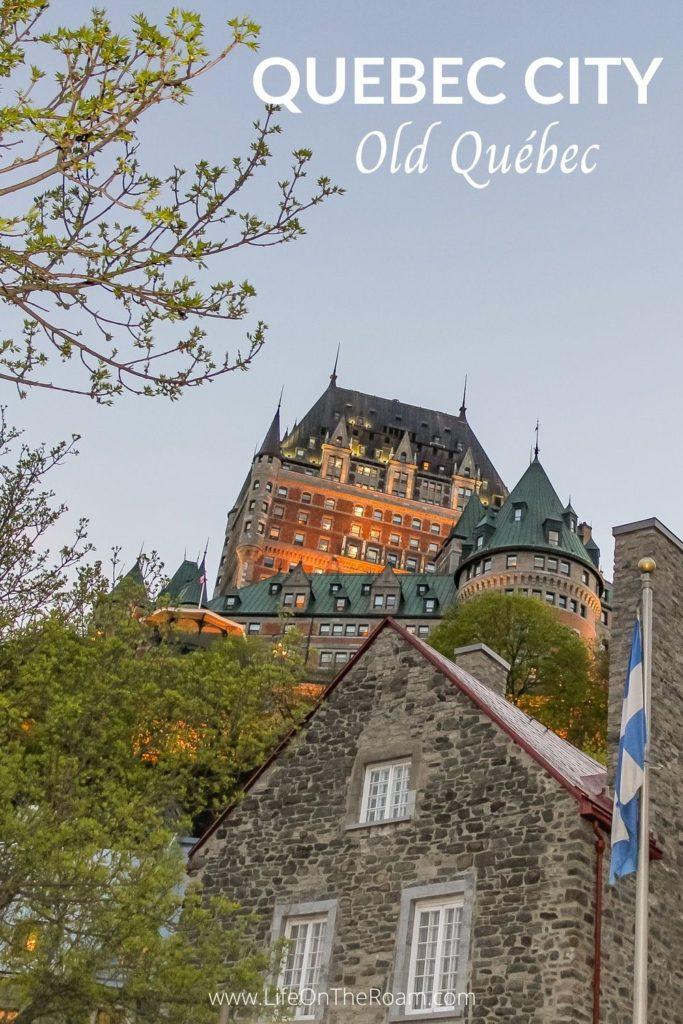
Table of Contents
A Walking Itinerary of Old Québec (Vieux-Québec)
Old Quebec is a truly unique site in the sense that it’s the only remaining walled city north of Mexico. You’ll gain access to this UNESCO World Heritage Site through several gates placed along the wall. We’ll start at the St. Louis Gate, the closest archway to the Citadel.
But before you cross the gate (if you’re staying outside the wall), stop at La Fontaine de Tourny, a beautiful fountain purchased at a flea market in France and placed in front of the colourful Parliament Gardens.
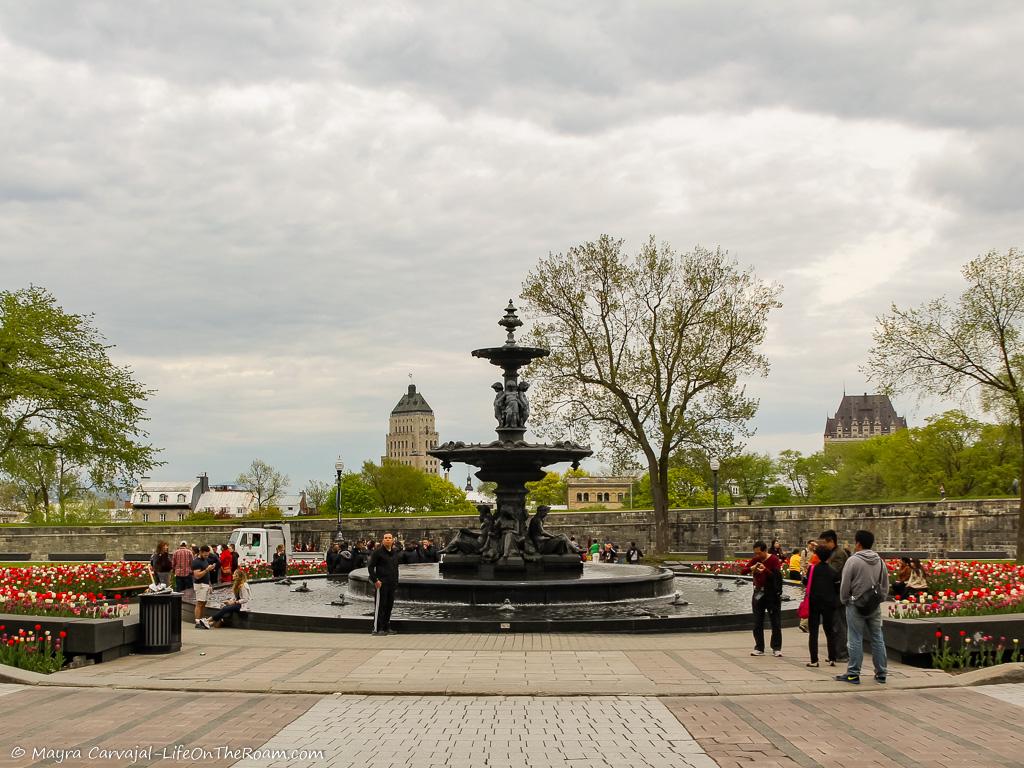
At the nearby Esplanade Park, you can go uphill and stroll along the original walls of the fortified city, with old cannons peaking through as a reminder of its military past. It’s one of my favourite spots to catch the sunset, get a glimpse of the Parliament, and bask in the views of the Upper Town skyline against the silhouette of the mountains.
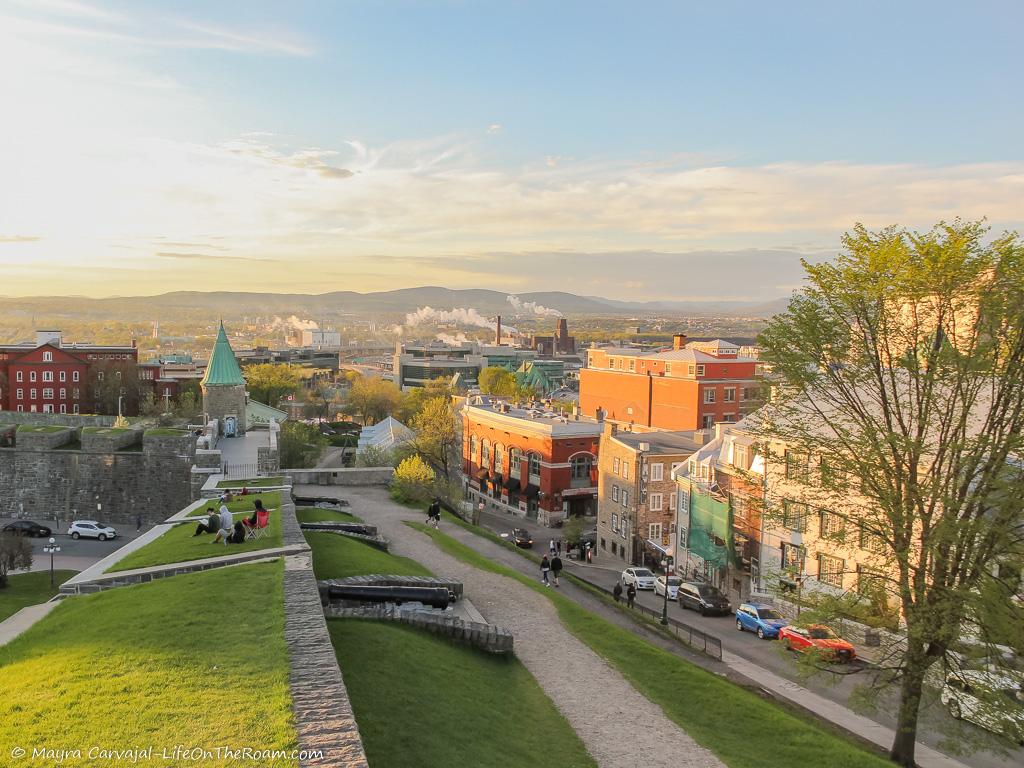
Exploring Québec Upper Town (Haute-Ville)
The Citadel Ramparts, the Governor’s Promenade and Best Lookouts

After crossing the St. Louis Gate, on your right, you’ll find the road that leads to the National Historic Site of La Citadelle (The Citadel).
This star-shaped fortress was built by England in the early 1800s’ to protect the colony from invaders (as in France and the United States), and to muffle any revolt attempts from the French population, who wasn’t thrilled to submit to the new British ruler.
If you want to visit La Citadelle you must join their guided tour as this is an active military base.
I stayed on the outer edge of the fortress heading southwest and crossed the rampart to take a quick walk on the Plains of Abraham, an urban park within the massive Battlefields Park (think Central Park in New York City). Here, in 1759, British troops defeated the French forces, marking the end of what was known as the Nouvelle-France (New-France).
Back on the rampart that runs parallel to the Avenue du Cap-Diamant, you’ll end up at a lookout with gorgeous views of the St. Lawrence River and the Appalachian Mountains.
It’s also the start of the Governors’ Promenade (La Promenade des Gouverneurs).
The long boardwalk, with some of the best views of Québec, was built on the side of Cape Diamond (Cap Diamant), connecting the Plains of Abraham with Dufferin Terrace, a great point to see the river and a bird’s eye view of Québec’s Lower Town.
Dufferin Terrace: Chateau Frontenac and Saint-Louis Forts and Chateau National Historic Site
The Governor’s Promenade connects with Dufferin Terrace, another long walkway with fantastic views of the St. Lawrence River, and a battery of cannons on display.
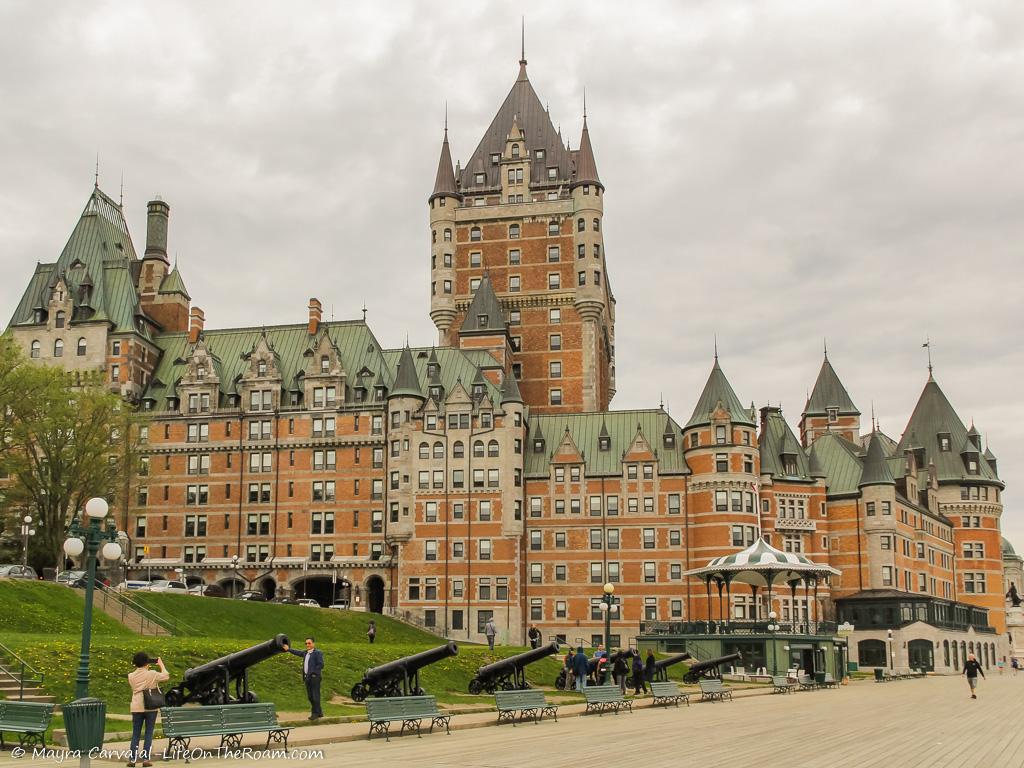
But the prima donna here is the Chateau Frontenac, a famous hotel built in 1892, resembling a massive castle.
I repeat: resembling. This is not a castle. Has never been. But there was one (just not this one, more on that later).
Chateau Frontenac, a National Historic Site, was built in Chateau style. As a way to attract travellers, The Canadian Pacific Railway company decided to build hotels along its routes, and voilá! the hotel was born (and so did its brothers: Chateau Laurier in Ottawa and the Royal York in Toronto. Of all three, Frontenac is the most beautiful.
But there is more to Dufferin Terrace than meets the eye.
Seeking refuge from a bone-chilling snap of wind, I ran like a bat out of hell into one of the gazebos along the boardwalk. It turned out to be the entrance to an archaeological site located right under.
Saint-Louis Forts and Chateaux, a National Historic Site, was the residence and office of French and British governors during the colonial period. Why can’t you see the castle anywhere? Well, it burned to ashes in 1834 and it was never rebuilt (I told you there was one).
However, you can see remains of some areas, such as the icehouse, the stove, the oven, and the butler’s pantry. There is also a large display of artifacts found on site.
The Famous Outdoor Gallery in Rue du Trésor
Walk past the Chateau Laurier, cross the Place D’armes square heading north and you’ll find Rue du Trésor, a narrow street that is the place to see the work of local artists (and maybe take some pieces home with you). I loved the artwork on display. So much talent in Québec!
Notre Dame de Québec Basilica-Cathedral
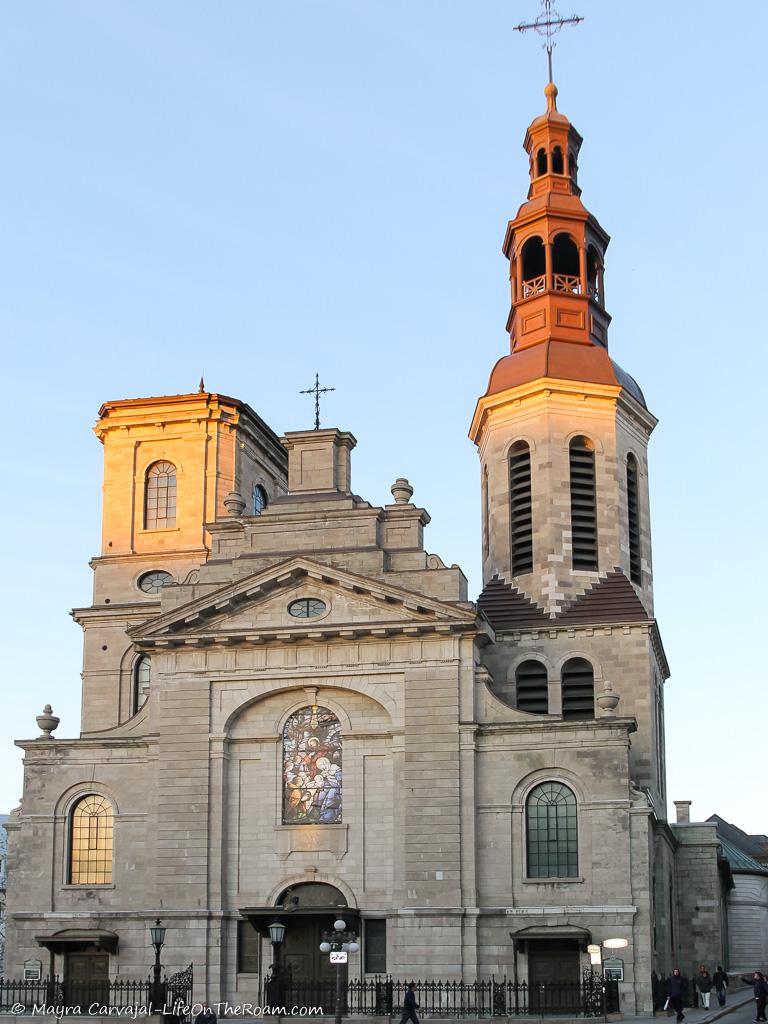
Keep heading north of Rue du Trésor to visit the Notre Dame de Québec Basilica-Cathedral: Canada’s first Catholic parish and cathedral. Built in 1647, it has richly decorated ceilings, beautiful stained-glass windows, an ornate Louis XV style pulpit, and a sanctuary lamp gifted to Bishop Laval (first Bishop of Quebec) by the one and only Sun King, Louis XIV.
The Richard Mille Clock (The Clock from Jura)
From the Basilica, walk west towards the City Hall – a former Jesuit college- to find a masterpiece worth seeing.
To celebrate the 400th anniversary of Québec, the Canton of Jura in Switzerland had Richard Mille -a swiss luxury watch company- build a state-of-the-art huge clock that took hundreds of people from different trades more than six years to complete.
The monumental 11-feet structure, made of titanium, sapphire, aluminum, and ruby, sits outside in a glass enclosure so you can see the 3,156 moving parts of the mechanical clock.
To follow the itinerary into Québec’s Lower Town go back to Dufferin Terrace, to the Samuel de Champlain monument (across the Chateau Laurier and Place D’Armes).
Enjoy the tons of outdoor art you’ll see around on your way.
Exploring Québec Lower Town (Basse-Ville)
The Staircases and Murals of Lower Town
Climbing the different stairs connecting Upper Town with Lower Town is part of the charm of Old Québec.
A route I love starts at the top of the Escalier Frontenac (Stairs), next to the Samuel de Champlain monument in Dufferin Terrace, down to the Quartier Petit Champlain.
But first, why does Monsieur Champlain have a monument? Well, he is known as The Father of the New France. He was a French explorer who mapped the St. Lawrence River and established the first French settlement in North America in the 1600s, in what we know today as Québec City.
Once you reach the bottom of Escalier Frontenac you’re on a winding road named Côte de la Montagne for a beautiful walk.
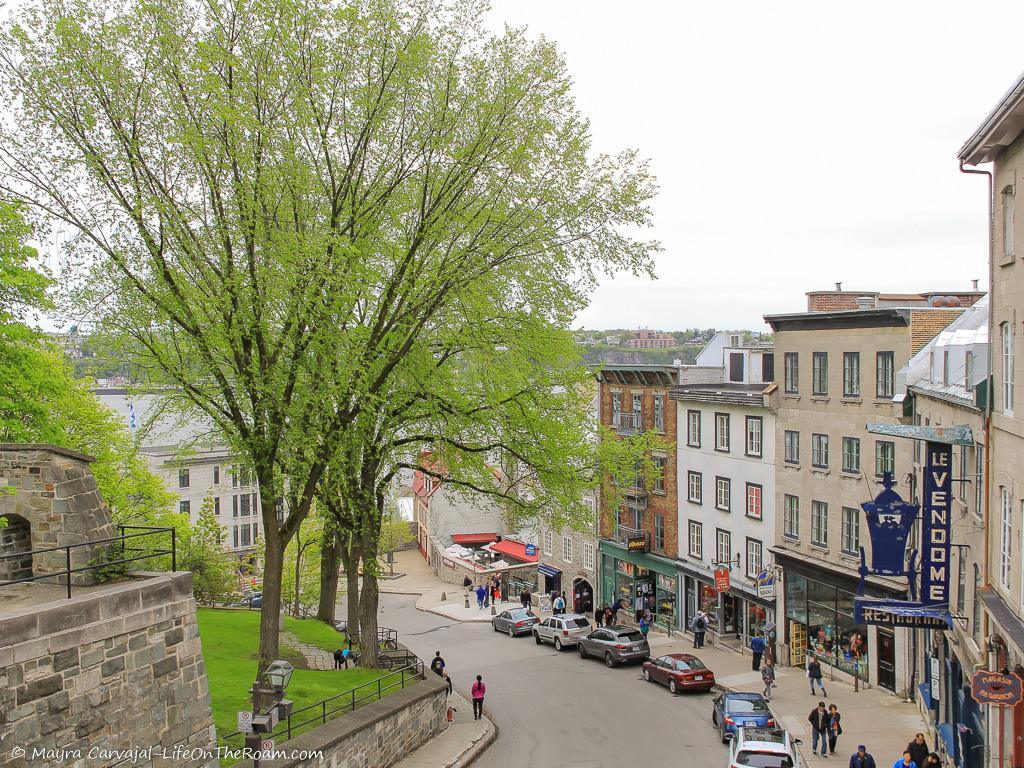
As you go downhill, on your left you’ll see the Montmorency Park National Historic Site, where the Parliament of United Canada used to be before the building was consumed by fire in 1883. Large trees add a big splash of green to the scene in the summertime.
If you stop at the park you’ll be rewarded with magnificent views of Lower Town and the river.
Keep going and you’ll arrive at the top of the Escalier Casse-Cou (Breakneck Steps), the oldest staircase in the city. Once you finish your descent, hopefully with your neck intact, you’ll be officially in Lower Town and stepping into my favourite street: Rue du Petit Champlain.
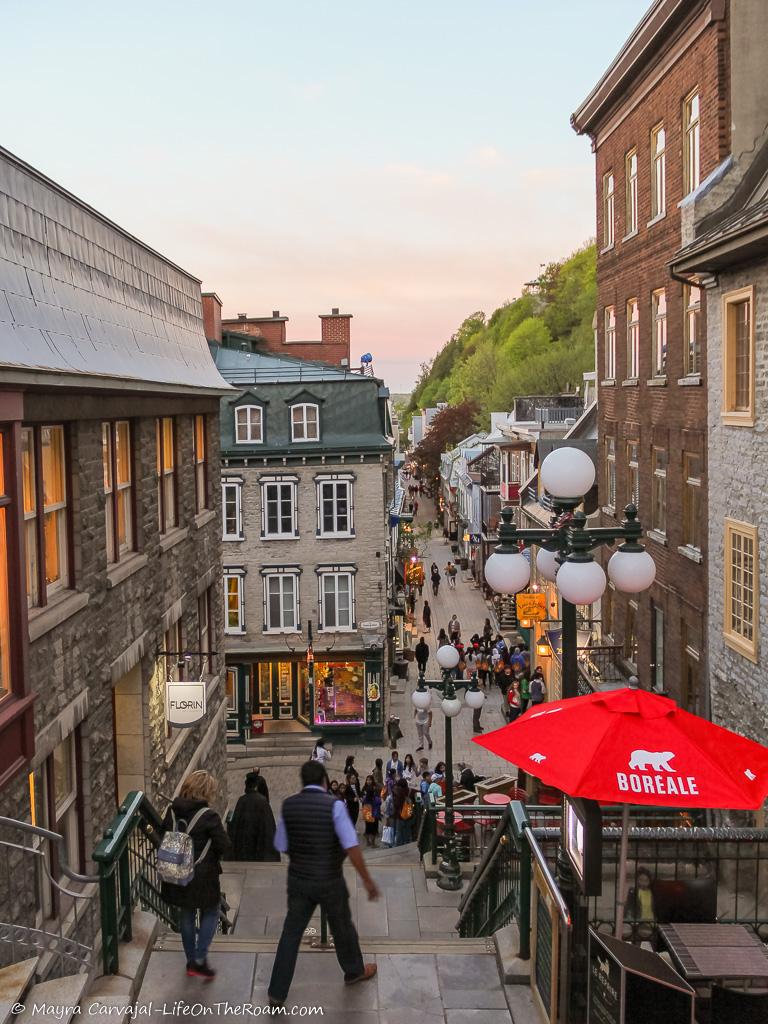
Quartier Petit Champlain
The Quartier Petit Champlain oozes Old World charm. Beautiful small buildings with stone-clad facades, eye-catching artwork, and one of the well-known murals of the city, Le Fresque du Petit Champlain (Neptune Inn Mural).
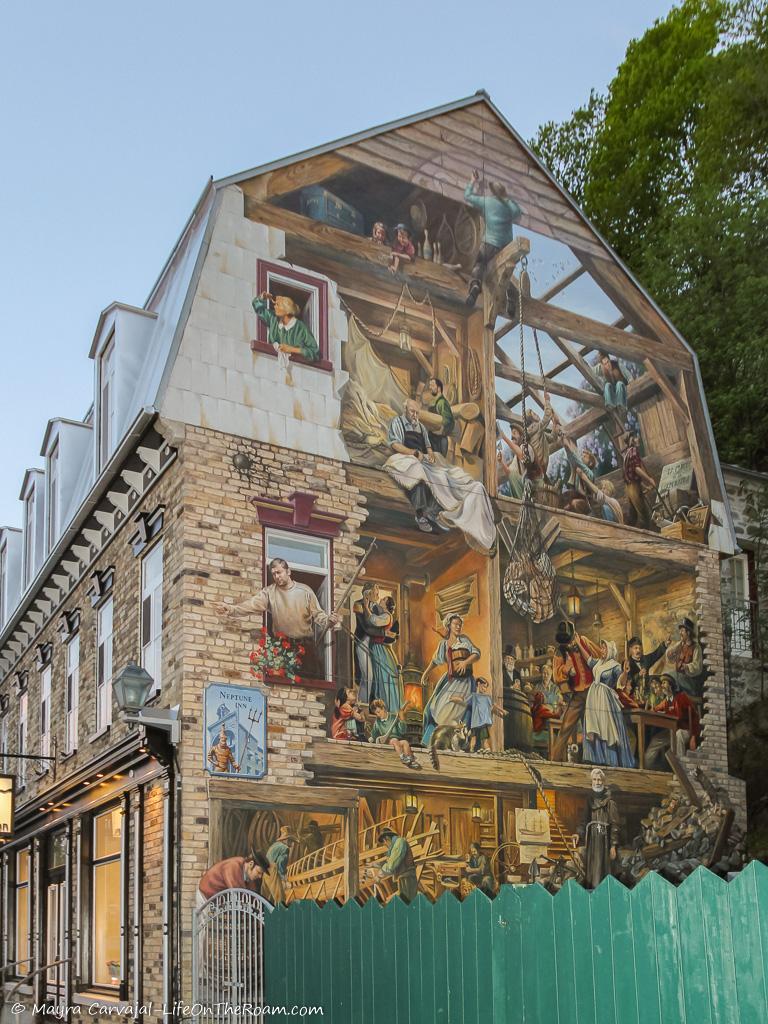
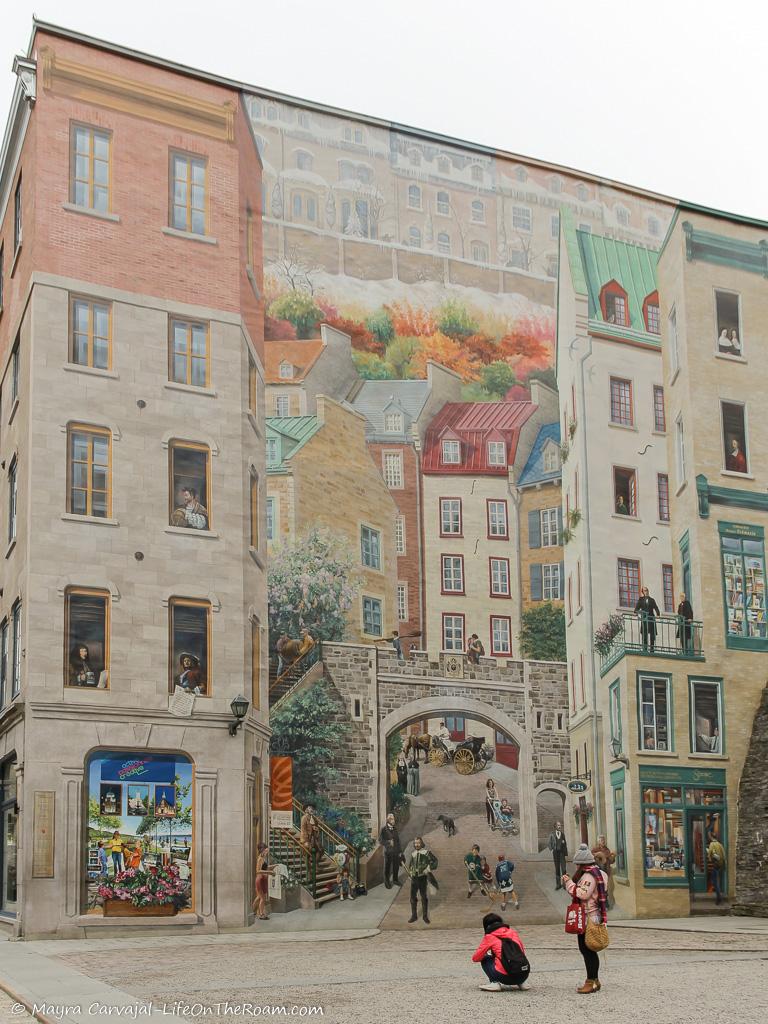
In Rue Notre Dame you’ll find an even larger mural depicting prominent figures of Québec’s history: Le Fresque des Quebecois (The mural of Quebecers).
Just around the corner, you can visit Place Royale. A pretty square that is home to the Musée de la Place Royale, a museum where you can learn about the New-France.
The Museum of Civilization
Keep walking north, towards the riverfront, to visit the Museum of Civilization (Musée de la Civilisation). I was delighted with the interactive exhibits covering different subjects: the human body, the animal kingdom, new technologies and their impact on human life, and the development of cultures around the world.
The museum lives inside a modern building designed by Moshe Safdie (architect of the National Gallery of Art in Ottawa) that blends masterfully with its surroundings.
Walking around the building’s exterior is as interesting as the multimedia displays inside. Or should I say, walking above the building? As I climbed the steps flanking the main entrance up to the roof terrace I unveiled another wonderful view of the river and the Chateau Frontenac.
The stairs lead to the back road, discharging into Rue Saint-Pierre, home to many art galleries and a few blocks away from Place Royale.
85, Rue Dalhousie, Quebec City; Tue. to Sun.: 10AM- 5PM (Open daily during the summer); General admission: CAD$20
Escalier Cap-Blanc: Québec City’s longest staircase
I went back to the upper section of the city trying a different route.
Instead of going through Lower and Upper Town I walked south on Boulevard Champlain along the river and turned right at Rue Champlain until I found the Escalier Cap-Blanc, the city’s longest staircase, dating back to the 19th century.
And up there we went. All 398 steps, surrounded by trees and with unparalleled nature views until we reached the Plains of Abraham.
Visit the Montmorency Falls Park (Parc de la Chute-Montmorency)

Every few minutes I stopped to turn around and gaze at the roaring water from different viewpoints. As we climbed the 487 steps of the panoramic staircase, I admired the wide, 272-foot-high waterfall (Québec’s tallest), pouring over the cliff.
The Montmorency Falls Park is only 12 Kms. from Old Québec (also accessible via a bicycle trail), making it a quick trip. I’d allow at least two hours to roam around, as there is more to the park than the views of the imposing waterfall.
From the visitor centre, you have the option to start the circuit by boarding the cable car to lift you up to the top of the cliff (for a fee).
I took the other route, walking the path along the river to the foot of the waterfall, soaking in the mist at the promontory before climbing the steps that brought me to the Sentier de la Batterie (trail), for an eye-level view of the top of the falls and the surrounding forest.
Perfect spot for a picnic or to walk across the orchard, a field where British and French soldiers fought in 1759. Remains of structures used by General Wolfe, who used Montmorency as a strategic observation point, are still standing.
I then crossed the Fault Bridge (Pont de la Faille), for a panoramic view of the St. Lawrence River and the 43 Km.-long fault that gave origin to the falls.

On the other side, the tree forest surrounding the Sentier Royale ends at the Suspension Bridge, for one of the most exhilarating views.
The calm waters of the Montmorency River, resembling a reflective black glass, gently curves as it approaches the bridge before turning into a powerful waterfall, right under your feet.
Right after stepping off the Suspension Bridge, the stairs down to Baroness’ Lookout allow a closer look at the falls on the side, and people’s faces of excitement (and relief) after ziplining across the cliff.
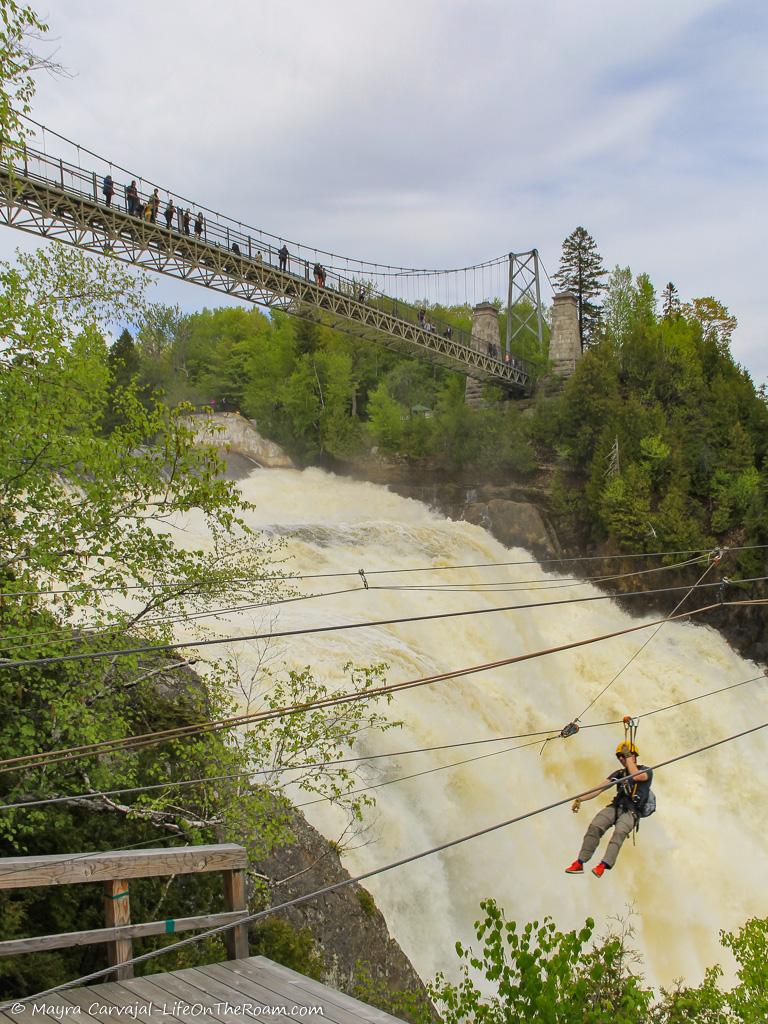
There is also a Via Ferrata (seasonal) with different levels of difficulty and several eateries.
5300 Boulevard Sainte-Anne, Québec; Opening hours vary according to the season
The Basilica of Sainte-Anne-de-Beaupré
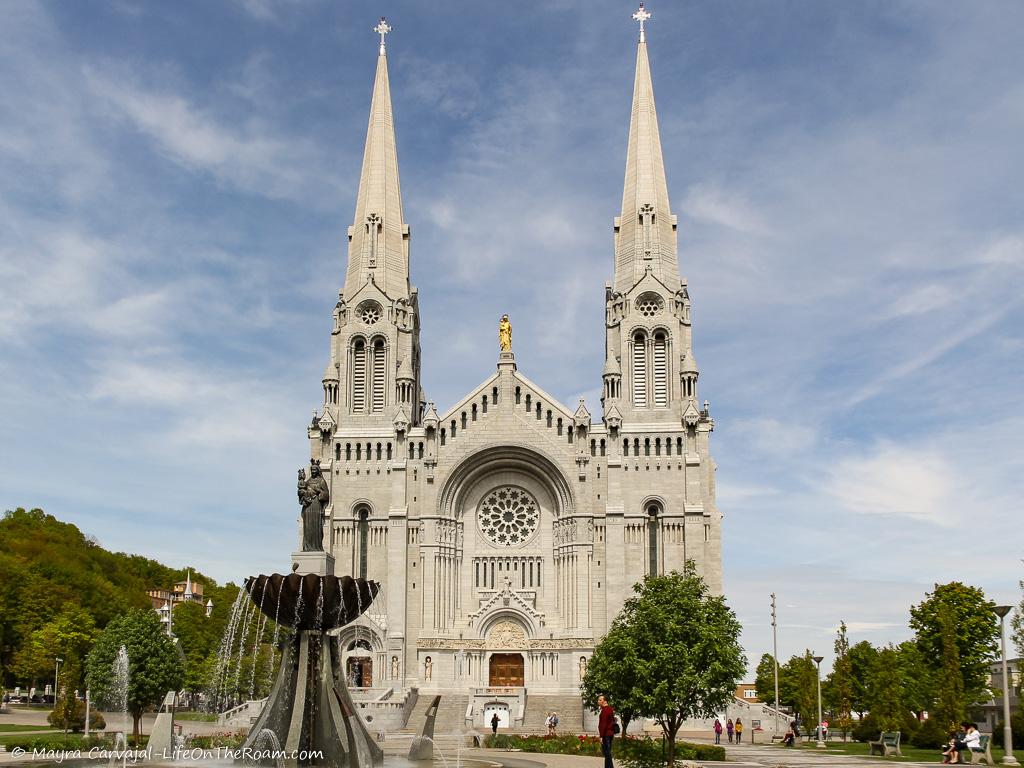
You hear the Wow’s from the moment you stand in front of the facade of this massive Romanesque Revival-style building.
Followed by the Oooh’s once you step inside and see the fine mosaic adorning its high ceilings, the marble details, the wood sculptures, and the stained-glass windows colouring the sunlight.
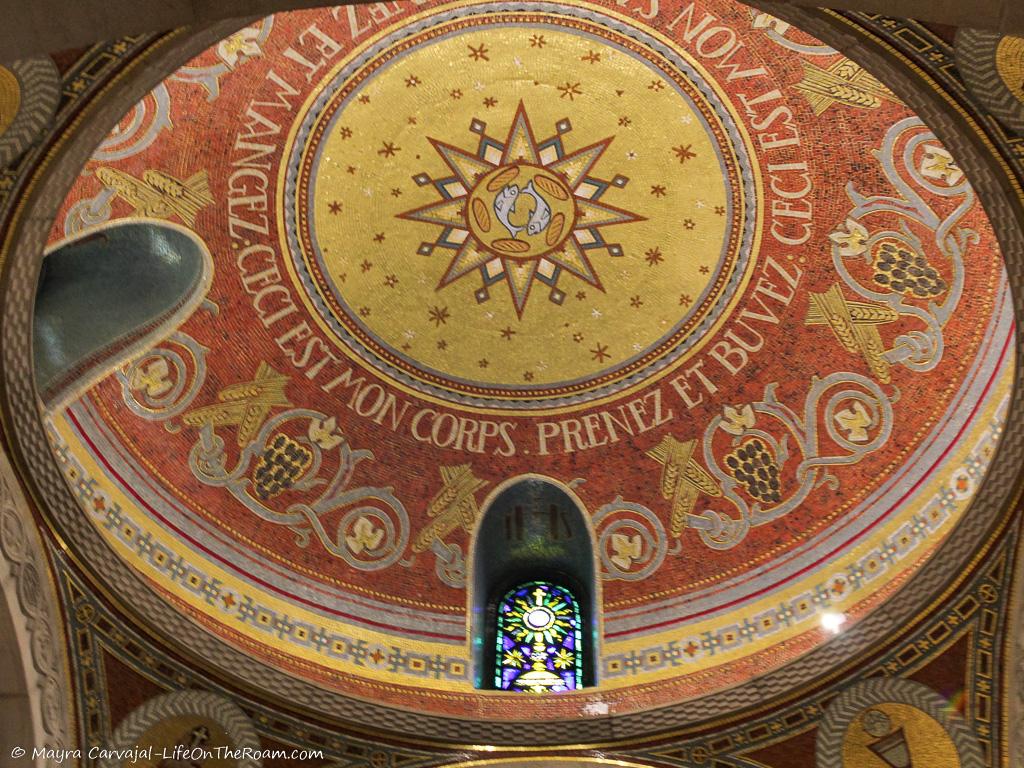
The sacred art on display in this historic monument is stunning. I was mesmerized by the ten ambulatory chapels surrounding the imposing sanctuary. Each one is different, with vaulted ceilings covered in intricate mosaics as beautiful as the ones in the sanctuary. It’s like entering a mini-museum, with lots to see.
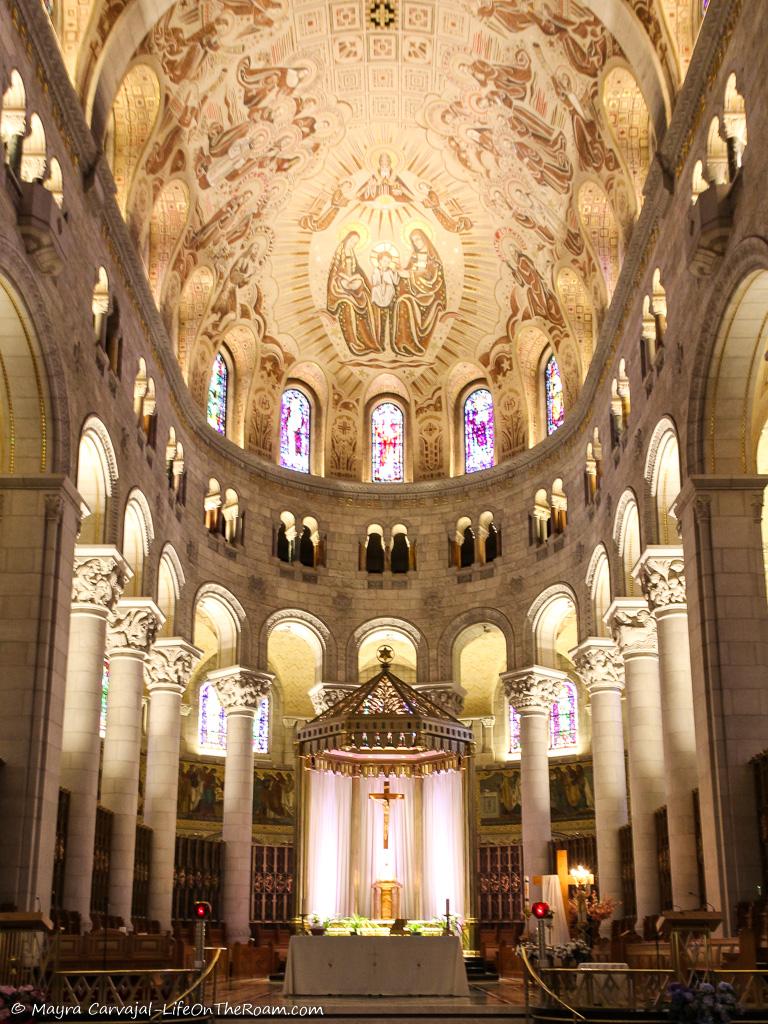
The Basilica of Sainte-Anne-de-Beaupre is 20 minutes by car from the Montmorency Falls, on Boulevard Sainte-Anne.
Sainte-Anne-de-Beaupre Basilica
10018 Avenue Royale, Sainte-Anne-de-Beaupré.; Open daily: 8AM-5PM (varies according to season); Free admission
How many days do you need in Québec City?
If you have the time, plan to stay at least two full days. There are so many lovely nooks and crannies to discover in the narrow streets. So much outdoor art competing with architectural details for your attention. And the views…
If you’re visiting Montreal you can take a day trip to Québec City (a 3-hour drive each way). I’ve done this in the summer, but I wouldn’t even think about it in the winter.
You can also fly to the Québec City airport from major cities within Canada and North America.
When I’ve stayed here for a couple of days I’ve booked accommodations right outside the Old City, within walking distance to the wall. It’s cheaper and you still have several options regarding restaurants and bars. If you’re driving, leave your car wherever you’re staying (check parking availability). It’s better to explore this corner of the world on foot.
When to visit Québec City?
I’m more fond of warmer weather so I prefer to visit between June and August. I’ve been here in May and it’s still cold, especially when it’s windy. Bring your jacket!
If you’re looking for a winter wonderland, you can’t pick a better spot. You’ll find heaps of snow, freezing temperatures, and the chance to do tobogganing off the Governors’ Promenade. You may want to schedule your visit with the Winter Carnival in February. And since you’re in the mood to celebrate all things Frosty you can check out Winterlude in Ottawa, another winter festival happening in February as well.
Where to Eat in Québec City
Sapristi
I visited the delightful Petit Champlain location for some delicious Italian food in Lower Town.
24 Blvd. Petit Champlain; 1.418.694.0303
Restaurant Copas
If you’re in the mood for Spanish tapas and good sangria, this is a great option.
595, Grande-Allee Est; 1.418.521.2373
Do you already see yourself walking through the cobblestone streets surrounded by art while watching the sunset over the river? If you’re planning a trip to Canada include Québec City in your plans. Even if it’s only for one day. The only thing you’ll regret is not staying longer.
Save this post for later to make sure you don’t miss any spots and let me know what was your #1 stop.
EXPLORE THESE NEARBY DESTINATIONS
BOOKING FLIGHTS AND ACCOMMODATIONS
Book your flight without losing your shirt
We check Momondo to find great deals to book our flights. Also, check Great Escape: it combines the listings from Expedia, Kiwi, Kayak, (and Skyscanner on the premium service) to find the best airfares.
To find a place to stay for less
Booking.com: this site combines everything under the sun. You’ll find hotels, apartments, B&B, hostels, rooms, etc., with all sort of filters to make your search a breeze.
Hotwire: the first site I check when we plan to stay at a hotel for a few nights. You can save anything from 20% to 60%. Use the search filter to find what you want and you’ll end up with three listings that match your criteria. You’ll know which one you’ll get after you book. If you can handle a little bit of uncertainty you can score big savings.
House Sitting: you take care of people’s pets and house for free while staying for free. It’s the closest thing to experiencing a place “like a local”. But it comes with responsibilities… Are you an animal lover? It may become your new way to travel.
To get travel insurance
SafetyWing: travel medical insurance that gives us peace of mind knowing that we’re covered in case of emergency. It’s convenient, affordable, and suitable for digital nomads who spend a long time outside their home country.
Check the full list of travel resources on my Resource Page for more options and savings
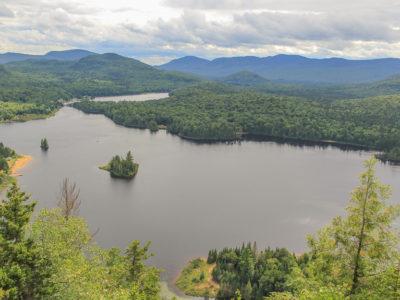
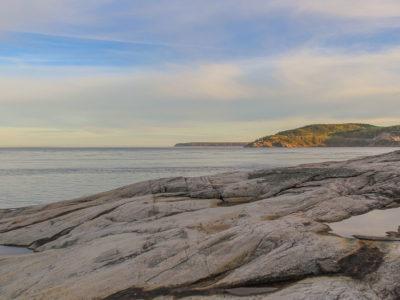
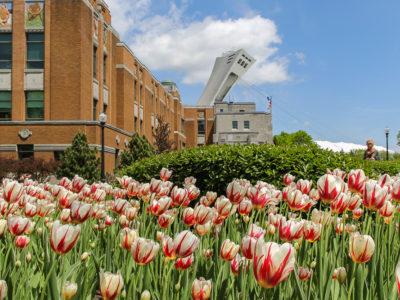
Quebec City is my favourite place to visit. You have done such a great job of describing the city that I am ready to head back there now. I have never visited in the winter but it is on my bucket list.
Thank you! Spring is also a wonderful time to visit, and you can do some whale watching up north.
Quebec is a beautiful city or what I have seen in my research for travelling there. I love that you have covered so many exceptional places to visit and the history is truly fascinating.
Quebec City and the entire region is gorgeous. No wonder why they call it “La Belle Province”!